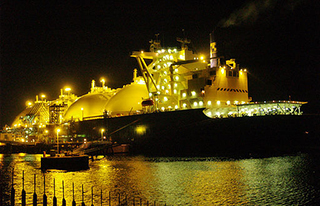A new report from the U.S. Government Accountability Office has found that approximately 100 liquified natural gas (LNG) carriers will be needed as the U.S. shifts from a net importer of natural gas to a net exporter in the coming years.
Currently operating LNG carriers are nearly all foreign built and operated, the report said, with no LNG carriers built in the U.S. since before 1980 and none currently registered under the U.S. flag.
Five large-scale U.S. liquefaction facilities are under construction with a projected capacity to export more than 12% of U.S. natural gas production in 2020. According to representatives from these five facilities, their liquefaction capacity has already been sold mainly through 20-year contracts and their customers are responsible for transporting the LNG to export markets, especially Asia.
Congress is considering whether to propose legislative language that would require U.S. LNG be exported via U.S.-built-and-flagged carriers with the goal of supporting U.S. shipbuilders and mariners. The GAO found that the proposed restriction to U.S.-built-and-flagged carriers could expand employment within the industry if it does not simultaneously reduce expected demand for U.S. LNG.
The GAO said that representatives from shipyards and mariners groups have estimated that it would take more than 30 years to build 100 new LNG carriers, and that between 4,000 and 5,200 mariners would be needed to operate the carriers needed to transport the full capacity of LNG from the five planned facilities once they are fully operational.
The report also found that U.S. carriers would cost roughly two to three times as much as similar carriers built in Korean shipyards, and be more expensive to operate. The GAO estimated that the increased costs would decrease competitiveness of U.S. LNG in the world market and might reduce demand, which could affect existing contracts for the U.S. facilities and projected U.S. LNG exports. In turn, this could impact the broader U.S. economy, including job and profit losses in the oil and gas sector.





